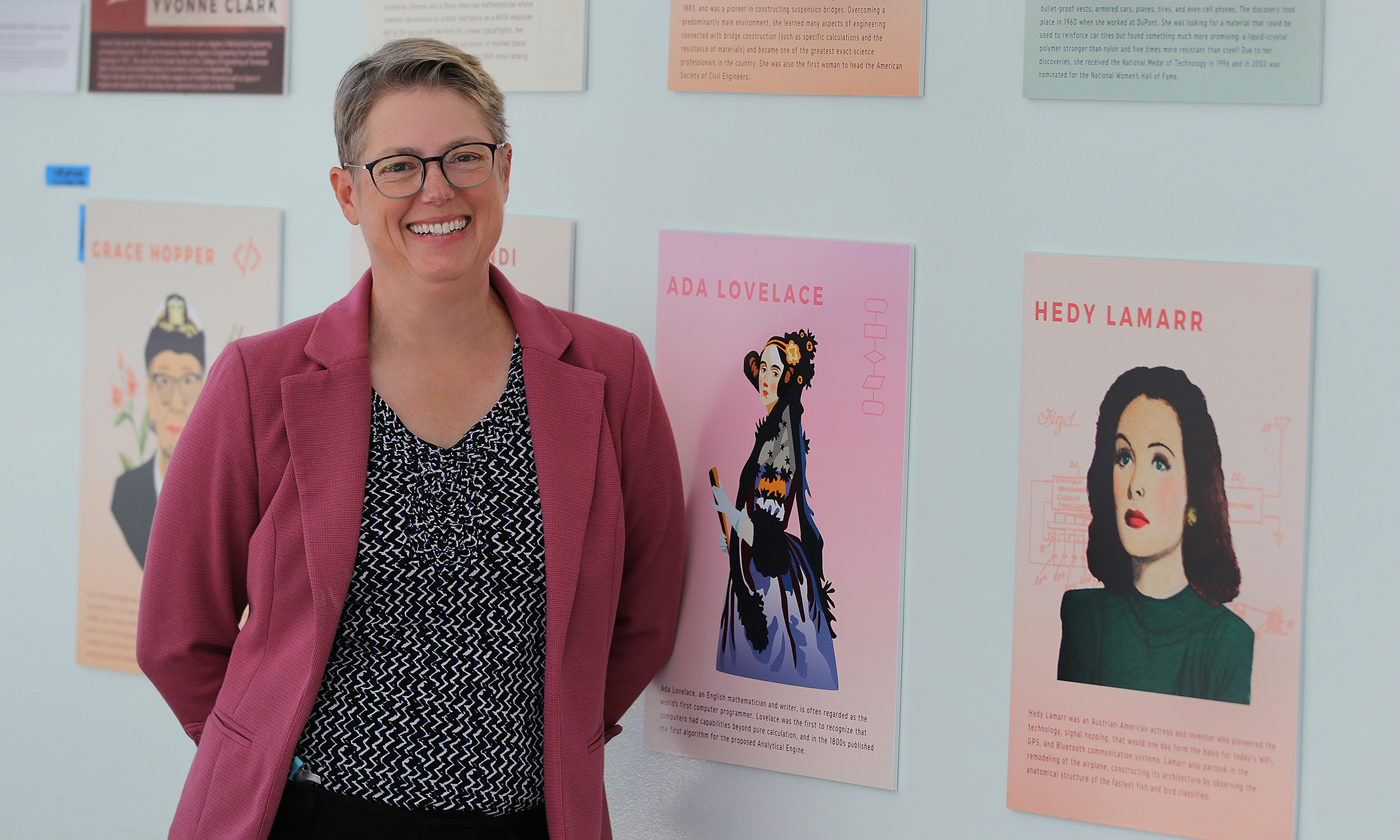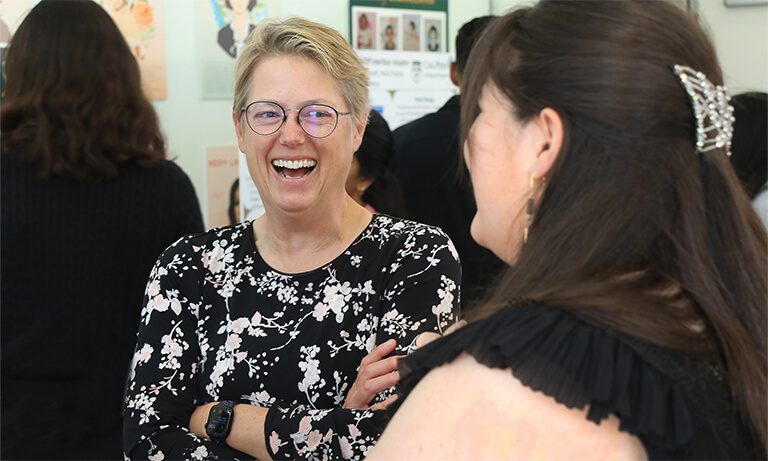College of Engineering Dean Amy S. Fleischer has made it her mission to build a supportive environment in the engineering and computer science fields, creating a multifaceted diversity, equity and inclusion program and enhancing the campus climate so all members of the community know they belong.
She is a pioneer in developing initiatives aimed at cultivating gender diversity and fostering a sense of belonging in STEM for which she was recognized by the Society of Women Engineers.
Fleischer was named the national recipient of SWE’s Diversity, Equity & Inclusion Program Award and will be honored during the organization’s annual conference in October.
To commemorate the accomplishment, we connected with the dean to learn more about her insights, influences and interests.

How can engineering education institutions like Cal Poly foster an environment that empowers women to thrive in their engineering careers?
We want to make sure that we create an inclusive environment that allows all our students to thrive. Some of the actions we take as a college include offering workshops for faculty on creating an inclusive classroom environment; providing opportunities for our students to meet young alumni from many backgrounds who are thriving in their careers; and crafting our spaces to be welcoming and nurturing a sense of belonging.
What strategies have you found effective in encouraging and supporting young women to pursue engineering as a career choice?
It is important to create visibility of women in engineering careers. Research shows that when girls see a woman succeeding in the field, then they will also consider that field. It is also important to focus on the creativity inherent in engineering and the positive impact on society that we can make as engineers and computer scientists. It is critical to do this at the elementary school level. The earlier we normalize interest in math, science and STEM activities, the more likely girls are to opt in. I have served on the board of my local Girl Scout council for years and do STEM outreach to girls at all levels.
How do you envision the engineering landscape evolving as gender parity becomes more of a reality? What positive changes can we expect?
By considering a broader set of perspectives, we can create systems that better reflect the reality of our world. For instance, the first air bags implemented ended up being dangerous/deadly for women and children because testing was only done on crash test dummies the size of adult men. Situations like these are too common in the history of engineering and computer science.
Can you share a story of a mentor or role model who has significantly impacted your own journey in engineering?
When I was an early-career professor, I had an extremely supportive dean who took an interest in me and my career progression. He offered opportunities for leadership training, opportunities to contribute to the college’s success and supported my career growth. I was lucky to work with him, and I try to model his approach by creating opportunities for our faculty. Sadly, he passed away unexpectedly the month before I started as the Cal Poly College of Engineering dean, and I never got to collaborate with him dean to dean.
What steps can industry leaders take to ensure that women’s contributions to engineering and technology are fully recognized and valued?
Industry leaders should take steps to make sure their cultures are inclusive, ensure equitable pay and provide equitable access to career progression.
How does it feel to be recognized by SWE for your contributions? What message would you like to send to the next generation of aspiring women engineers?
I feel humbled to be honored by SWE. I tell my team that we need to focus on making our corner of the world a better, more equitable place. If each of us does that, the impact will be amplified.
What advice would you give to young women considering a career in engineering but may have concerns about the challenges they could face?
I would encourage them to give it a try! Some ways to support success in the field include building a supportive group of classmates such as joining the student chapter of SWE at your university.
If you could collaborate with any historical figure, living or not, on an engineering project, who would it be and why?
Well, we’d need a bigger team than just the two of us! I think it would be fun to do a group project with Mary Jackson (one of the “Hidden Figures”), Hedy Lamarr and Grace Hopper. That would give us a mechanical engineer (myself), an aerospace engineer (Jackson), an electrical engineer (Lamarr) and a computer scientist (Hopper). It would be fun to see what kind of creative project we could develop.
What’s the most unusual or unexpected skill or hobby you have that people might not associate with your engineering background?
I like to crochet, particularly stuffed animals, and have crocheted figures of Marie Curie and Jane Goodall. My other main hobbies are hiking, biking, kayaking and yoga. Yoga, in particular, centers me after a challenging day.
Do you have a favorite engineering-related book, movie or TV show that you’d recommend to others?
I like to give young children the book “Rosie Revere, Engineer” as a gift. Other books that I have found interesting include: “The Challenger Launch Decision: Risky Technology, Culture, and Deviance at NASA” by Diane Vaughan and “To Engineer is Human: The Role of Failure in Successful Design” by Henry Petroski.
What’s the most unexpected or quirky place you’ve found inspiration for an engineering project or problem-solving?
I do my best thinking outside the constraints of the office, usually when hiking or biking. One year, I rented an Airstream Classic for a solo trip which I spent brainstorming strategic direction for the college.


